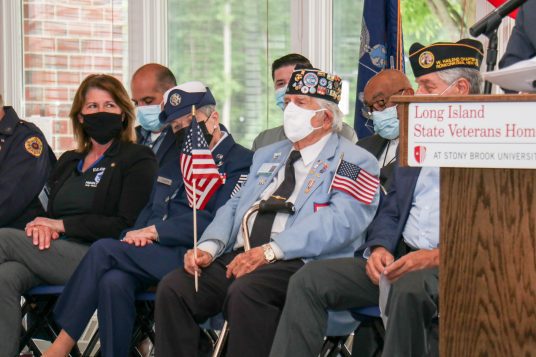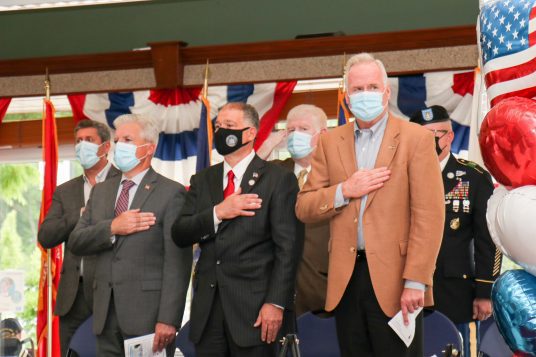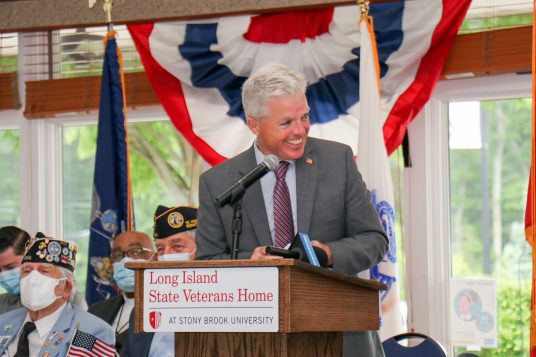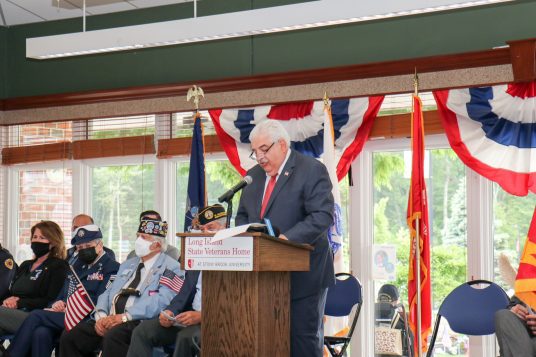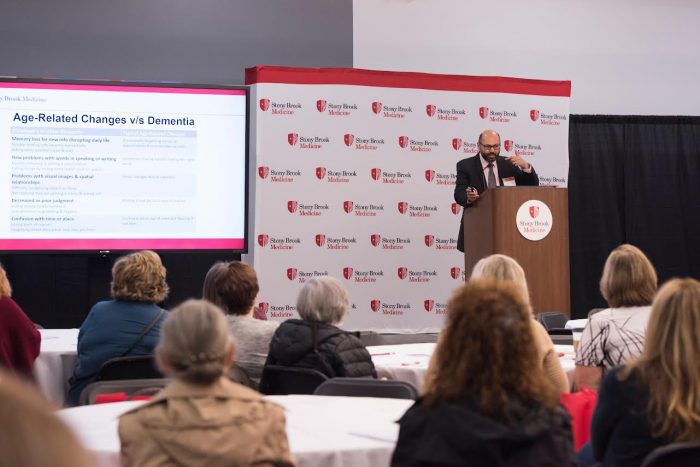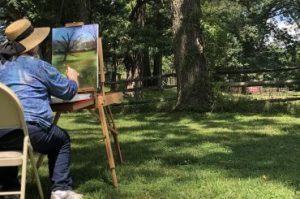As votes were being counted in the Three Village Central School District for budget approval and board of education trustees on the night of May 17, the budget race was a close one.
At the end of the night, the 2022-23 budget of $224 million passed by 66 votes, 2,584-2,518. The new budget is $3.8 million more than last year’s contingency budget of $220.2 million, reflecting a 1.72% increase. The proposed tax levy is $165 million.
Last year, although 57.7% of taxpayers voted in favor of a $222.6 million budget — 2,286-1,677 — it failed to pass. The proposed 2021-22 budget pierced the 1.37% cap on the tax levy increase, necessitating a supermajority approval, or 60% of the vote.
TBR News Media asked readers how they voted on May 17 regarding the 2022-23 TVCSD budget.
Those who approved
Ian Farber, of East Setauket, and a member of the district’s budget advisory committee that was formed earlier this year, said he voted “yes.” He said he believes the district “made a good faith effort to increase the efficiency and efficacy of how our tax dollars are utilized.” He added he believed the committee helped facilitate that.
“While there is more work to be done, voting ‘no’ would not yield any positive outcomes,” he said. “Some in our community think that we operated this past year on contingency with no impact to the students and the instructional staff. While we fared better than other districts on contingency, some classes couldn’t be expanded and teachers that were previously dedicated to a specific school had to float between multiple buildings. The district was also prevented from paying back money into the reserves, putting us all at an increased fiscal risk.”
Farber said he felt if the district operated on a contingency budget for years in a row, it would erode the district’s educational institution.
Shoshana Hershkowitz, of South Setauket, also voted “yes,” saying that “the difference in taxes between the proposed budget and the contingency budget is minimal, and I think our schools have done an excellent job through several challenging years.”
She said addressing rising costs and making other changes is beyond the district level.
“If we want to address rising costs on Long Island, the way to do it is by looking at issues including the lack of affordable housing, health care benefits being tied to employment, and the fact that Long Island has over 120 school districts, which increases both cost and segregation,” she said. “Defunding our public schools, as some have advocated for, isn’t the way to reduce the cost of living in our region.”
She added that passing the New York Health Act would mean public sector benefits would no longer be part of school budgets.
Anne Chimelis, of Setauket, said this year as well as last she encouraged people to vote “yes.” She said having taught and lived in other school districts, she has witnessed when budgets are voted down, and she feels it doesn’t help the students. Voting a budget down is shortsighted, Chimelis said, and there are other ways to address it.
“The reality is your tax bill doesn’t really change that much when you vote down a budget, and things only get worse for your kids, for the district as a whole,” she said. “So, that’s not really the way to effect change in my opinion. There are many other ways to effect change.”
She applauded the formation of the budget advisory committee this year.
“I think having administrators, teachers, other people from the school community be part of that next year is a great idea, and I’m sure that in working together they can continue to find ways to spend money more efficiently without just summarily voting down a budget,” she said.
Chimelis said she wasn’t pleased that 4.5 nursing positions were being eliminated with the 2022-23 budget. The district’s decision was stated that the nurses were no longer needed due to the wake of declining COVID-19 infection rates. However, she said she wouldn’t vote down the budget for one issue.
For Farber, he would like the STEM program to be brought back to the elementary schools and expanded into STEAM to incorporate the arts.
“No budget is perfect, and 3V still has room to improve,” Farber said, despite his “yes” vote.
He added, “Continuing and expanding upon collaboration is how we improve.”
A ‘no’ vote
David McKinnon, who ran for school board in 2020 and 2021, was also a member of the budget advisory committee, which he said he believes made the process more transparent to the community but was not set up to constrain costs.
The East Setauket resident said he was disturbed that the teachers union, New York State United Teachers, injects themselves into local school district elections. According to NYSUT’s website, the “statewide union has a political fund-raising arm called VOTE-COPE.” The nonpartisan fund was established to coordinate “the voluntary contributions of members and supports NYSUT-endorsed candidates and campaign committees that are pro-public-education and pro-labor.”
McKinnon said, while he supports teachers and other workers, the campaign means more money is spent on advocating for residents to vote “yes” than “no.” NYSUT did not return requests for the amount of funds invested in the TVCSD election.
He said he believes “most people in the district want accountability on education and on spending” and that it would be best for residents’ decisions to be unaffected by a lobbyist group.
“Ideally decisions surrounding the schools would be made by the local community without external interference,” he said.
McKinnon added he believes with NYSUT getting involved that teachers may have a louder voice, when “there are multiple stakeholders,” students, parents, teachers, administrators and staff. He added he believes that the opinions of students and parents should be heard and balanced with the needs of teachers and administrators.
“Our school district is currently funded at close to the highest level in the nation on a cost per pupil basis, taking account of economies of scale related to school size,” he said. “Given this already very high level of funding, the fiscally responsible position is to keep the cost per pupil reasonably flat in terms of real dollars.”
McKinnon said with declining enrollment over more than a decade in the district there should be a zero budget increase.
“Instead, the budget has increased substantially over the last decade, except for last year,” he said.
Barbara Rosati, represents parents and educators through the group Three Village Parents Alliance, which has a Facebook page, a mailing list of nearly 200 residents and a website. She is also married to McKinnon. She said she voted “no,” and believes that just because she and others did so, it doesn’t mean they are unsupportive of the district or education.
Rosati said she and others believe the district’s core academic programs, especially at the elementary level, can be updated and improved. While she knows parents who have supplemented their children’s education through out-of-school tutoring or enrichment programs, she said it can be expensive and, for children, cumbersome.
She and other parents have also started a conversation with the district about “excessively early school start times,” and the TVPA group members are also concerned with growing property taxes, which they feel are due to excessive administrative costs.
“Yet, none of the tax increase on this year’s budget is aimed at addressing them,” she said. “After advocating for these issues, and closely following the district’s financial decisions, it would seem that this does not reflect a lack of funds but rather a lack of political will.”
She added, “Last year’s 0% tax increase budget could support all the existing programs, COVID-required extra instructional and noninstructional personnel, and also the addition of a few narrow interest programs.”
Marlo Dombroff, of East Setauket, also voted “no,” and she said she felt recommendations that the budget advisory committee made were not followed.
“When I evaluated the reasons for why the budget was to increase again, I couldn’t find a clear explanation of how the additional funds would directly benefit the students,” she said. “The budget continues to increase each year and it is almost imperceptible where those monies are going. As a parent, I don’t see any improvements in education. I had a child graduate last year who went through K-12, and I have a child now who is in 10th grade, who has been here also since kindergarten.”
As someone who has attended all board of education meetings, she feels changes and improvements suggested by parents have not been “put into place, regardless of heavy parent lobbying.” Dombroff said examples of needed improvements are to the elementary math classes and starting foreign language teaching in the elementary schools.
District’s statement
TVCSD Superintendent Cheryl Pedisich, who is retiring at the end of the school year, said in a statement the district was “thankful to the community for its participation in this year’s annual budget vote.”
“We look forward to continuing to work collaboratively with all our stakeholders to ensure that the district maintains the robust and supportive educational program it provides for all students,” she said. “In recent years, specifically during the past few years of the pandemic, we were able to sustain and build upon our practices to meet this goal.”
Pedisich listed the district bringing students back to school full time and in person during the 2020-21 academic year and implementing “initiatives designed to support learners across all levels — from the youngest to our seniors — all while reducing costs through the consolidation of administrative positions and other operational efficiencies” among the district’s accomplishments in meeting its goals.



